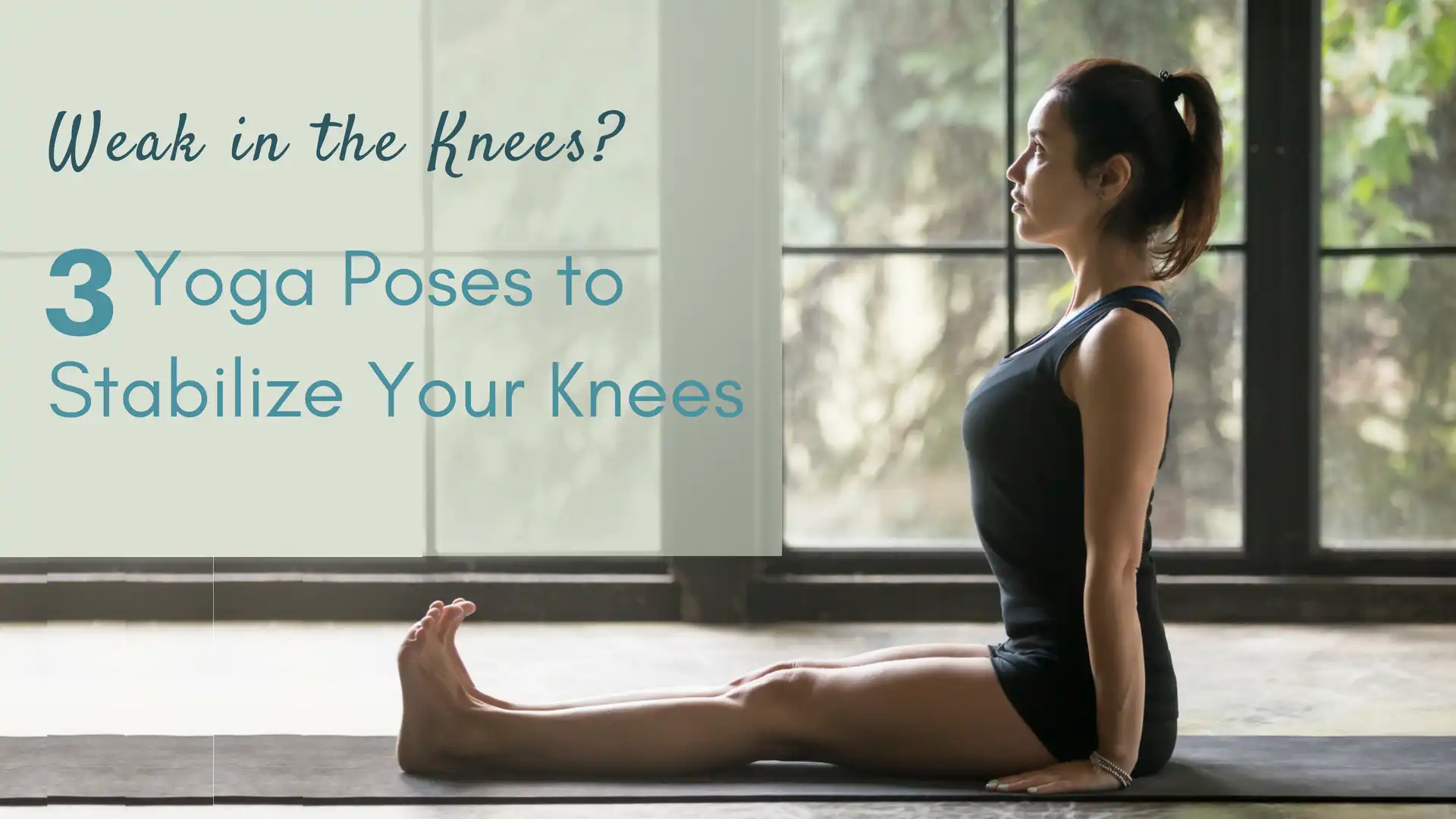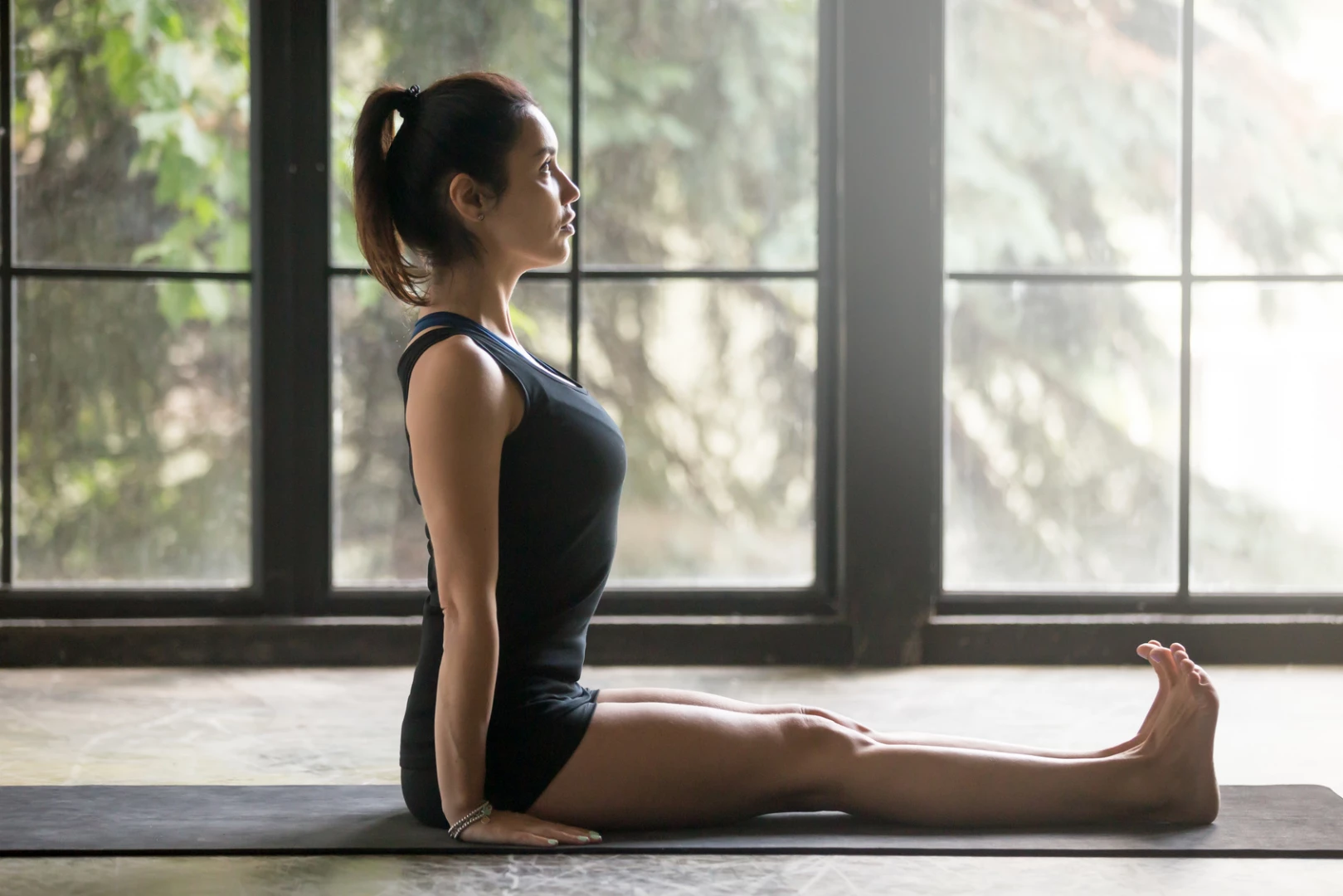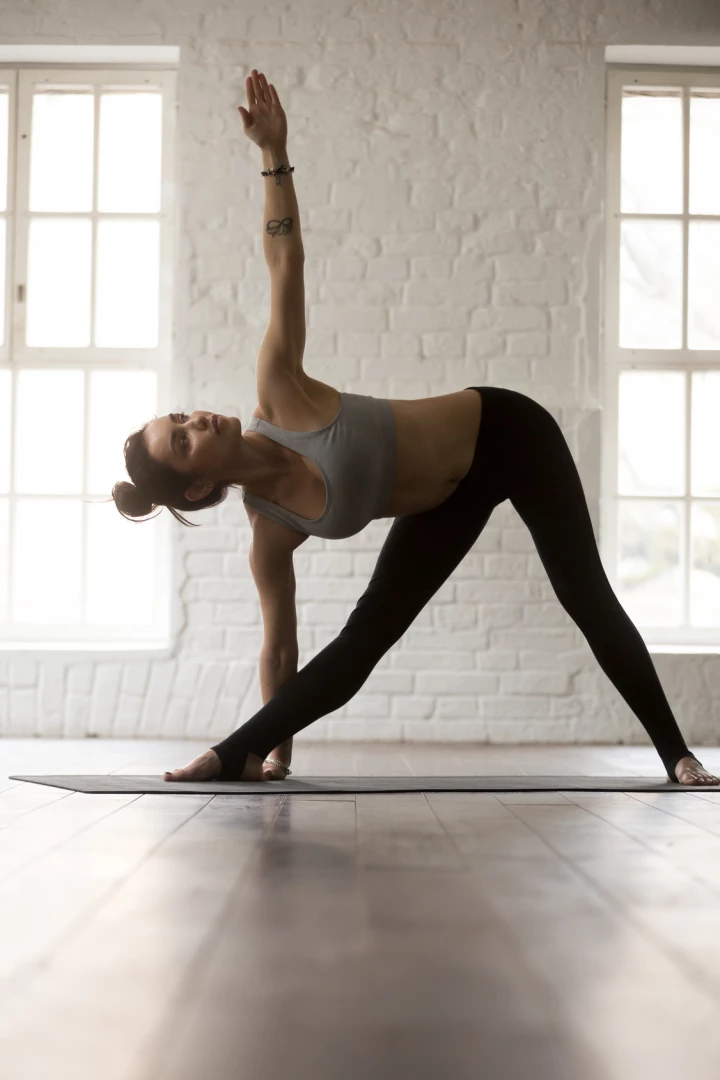Weak in the Knees? 3 Yoga Poses to Stabilize Your Knees

Do you suffer chronic knee pain and instability? Are you looking for new treatments? In this article, we look at yoga therapy as a potential solution for strengthening your knees and joints.
First, a short anatomy lesson: Many knee problems such as chronic pain, weakness, instability, and a tendency to hyperextend result from misalignment between your knees and the rest of your leg, in particular, the quadriceps muscles (the quadriceps are the muscles at the front of your thighs). The kneecap and quadriceps together make up the extensor mechanism responsible for straightening your leg. When functioning properly, the kneecap slides along a certain groove in the femur/thighbone. However, when there are misalignment issues it veers off track, resulting in wear and tear and instability in the knees as it grinds away at the surrounding cartilage.
What causes the knee to go off track? Generally, this is the result of muscle imbalances, in particular, weakness in the vastus medialis or inner quadriceps. When the vastus medialis is weaker than the other muscles, a sideways force is exerted on the kneecap, causing friction in the extensor mechanism. Indeed, many physiotherapists recommend strengthening the vastus medialis muscle as the best way of correcting knee misalignment issues, preventing you from having to wear something like basketball sleeve knee pads to stabilize your knees.
To check if you have misalignment issues, stand up straight with your legs and feet parallel, and engage the thigh muscles so that your kneecaps are pulled upward toward the hips. Do they move in a straight line or track towards the outside of the knees? If the latter is true, then you have alignment issues.
How Yoga Therapy Can Help Your Knees
What does yoga therapy have to do with all of this? Yoga therapy is a means of promoting mindfulness, and thus, intentional action. When applied to exercises aimed at strengthening your knees and promoting good alignment, yoga therapy, by improving your ability to pay attention to what matters, can help you better identify and train precisely the right muscles. You can learn how to engage your knees and quadriceps muscles in a healthy manner—a real challenge, as this muscle is difficult to isolate and retrain once you have developed bad habits.
How to Isolate, Strengthen and Retrain Your Inner Quadriceps
Dandasana (Staff Pose): This yoga pose will help you identify the vastus medialis. 
-
Sit up straight with your legs extended out in front of you. You can support your back against a wall if it’s more comfortable.
-
Rotate your left leg out 15 degrees. To find the vastus medialis, place two fingers just above the medial (inner) corner of the kneecap, then walk your fingers a few inches toward your inner thigh.
-
Slowly straighten your leg and feel your quadriceps engage. The vastus medialis is the teardrop-shaped muscle. You should be able to feel it beneath your fingers as your leg straightens out completely.
-
Hold for 8-10 seconds, and then release it. Repeat two more times, and then switch legs.
-
Then, do the exercise but without rotating your leg out. Make sure your leg is aligned such that the kneecap is facing straight up toward the ceiling. Then extend your leg to the fullest extent, making sure again to engage the inner quadriceps muscles. See how the kneecap tracks straight along the middle of the knee joint when you engage your quadriceps muscles in a balanced manner, instead of pulling to one side. Repeat with the other leg.
Virabhadrasana II (Warrior II): This yoga pose is especially effective at strengthening the inner quads (vastus medialis). 
-
Stand with your feet about a leg-length apart, and extend both arms out at shoulder level. Turn the right foot in 30 degrees and the left leg out 90 degrees.
-
Bend the left knee, ensuring it does not extend beyond the toes and ankle. The thigh should be parallel to the ground so that your leg is bent at a right angle.
-
Your weight should be centered in the heel. Don’t allow the inner arch of the foot to collapse; this shows that the knee is turning inward too much.
-
Place your fingers over the thigh above your inner knee to see that the vastus medialis muscle is properly engaged.
A correctly aligned Warrior II Pose gives your vastus medialis a really good workout, and also gets it into the habit of operating in harmony with the outer quadriceps muscles. This can help correct any muscle imbalances that cause your knee to track to the outside, which over the long term can result in wear and tear and chronic pain.
Trikonasana (Triangle Pose): This yoga pose also gives the vastus medialis a nice workout. 
1. Stand with your feet about a leg-length apart. Turn your right foot in 45 degrees and the left leg out 90 degrees.
2. Bend the left knee a little and align the hip, knee, and heel. Then mindfully straighten your leg, engaging the vastus medialis.
3. If you do this properly and the leg is correctly aligned, you’ll find the kneecap drawn straight up the leg. You will also find that you can’t lock your knee. Meanwhile, you will feel the muscles along the inside of your thigh stretch, right from the inner knee up to your sit bone. If you experience any pressure in your knee joint, you have probably relaxed your vastus medialis and hyperextended the knee.
Try out these yoga poses at home to strengthen and stabilize your knees, and also correct any misalignment issues that might lead to wear and tear and chronic pain. A little bit of mindfulness in how you utilize your muscles and joints goes a long way in correcting any imbalances!
Would you like more on this important knee safety topic? Read Olga Kabel’s article on YogaUOnline – Yoga for Healthy Knees: 7 Keys to Keep Your Knees Healthy and Safe.
 Mathew Foster is a knee health activist, trying to show everybody why having healthy knees is so important. Which is why he started his blog KneeSafe.com to help people find out more about knee health, knee protection, and tools that you can use to have healthier and stronger knees.
Mathew Foster is a knee health activist, trying to show everybody why having healthy knees is so important. Which is why he started his blog KneeSafe.com to help people find out more about knee health, knee protection, and tools that you can use to have healthier and stronger knees.



